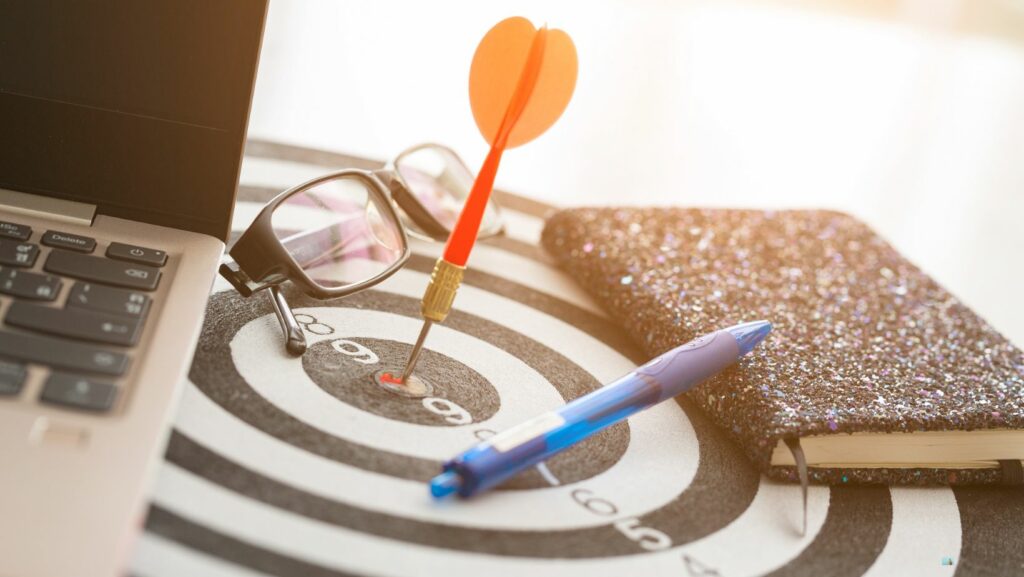Setting goals is a fundamental step towards achieving success, yet many falter at the very first hurdle by underestimating their capabilities. It’s crucial to recognize that the foundation of effective goal setting isn’t just about aiming high but also believing deeply in one’s ability to reach those heights. This initial rule serves as a powerful reminder to set the stage for personal and professional growth without self-imposed limitations.
The First Rule in Goal Setting is Not to Underestimate Yourself.
 Setting goals successfully begins with a strong belief in one’s capabilities. Underestimating oneself not only restricts the goals one sets but also potentially limits the levels of success and satisfaction one could achieve.
Setting goals successfully begins with a strong belief in one’s capabilities. Underestimating oneself not only restricts the goals one sets but also potentially limits the levels of success and satisfaction one could achieve.
Self-esteem acts as the backbone of effective goal setting. It empowers individuals to aim higher, confront challenges bravely, and seize opportunities that might otherwise seem out of reach. High self-esteem fuels ambition and fosters resilience, qualities essential for pursuing and achieving lofty goals. When people value themselves highly, they set goals that reflect their true potential, often leading to greater accomplishments. Conversely, low self-esteem might encourage setting minimalistic goals, stifling growth and achievement.
Challenges of Underestimation
Underestimating oneself leads to numerous challenges in goal setting. First, it creates a mental barrier that prevents individuals from even considering ambitious goals. People might avoid setting high targets to evade the risk of failure. Secondly, underestimation hampers motivation. Individuals are less likely to invest effort in achieving goals that they believe exceed their capabilities. Lastly, consistently setting low goals reinforces self-doubt and perpetuates a cycle of underachievement. Breaking free from this cycle requires conscious effort and continuous reinforcement of self-belief and capability awareness to set and achieve more challenging goals.
Setting Realistic Yet Ambitious Goals
 Setting goals that are both realistic and ambitious helps bridge the gap between potential and achievement. Striking the right balance can propel individuals toward success while ensuring the goals are tangible and achievable.
Setting goals that are both realistic and ambitious helps bridge the gap between potential and achievement. Striking the right balance can propel individuals toward success while ensuring the goals are tangible and achievable.
Understanding the importance of setting practical yet challenging goals is fundamental. Most individuals benefit from setting goals that stretch their capabilities but remain within the realm of possible. Setting excessively high goals can lead to frustration and disengagement if they’re perceived as unattainable. On the contrary, goals that are too modest might not serve as sufficient motivators. It is crucial to assess one’s skills, resources, and constraints before defining goals. For example, aiming to increase professional qualifications by pursuing advanced certifications over a year, considering time and financial resources, reflects a balanced approach.
The Role of Visualization in Setting Goals
Visualization serves as a powerful tool in goal setting. When individuals visualize achieving their goals, they enhance their ability to commit and strive towards them. Visualization not only clarifies the end result but also involves imagining the steps necessary to reach it. For example, athletes often visualize winning a race, going step-by-step through the motions in their minds. This practice not only prepares them mentally but also aligns their actions towards achieving the desired outcome.
Overcoming Mental Barriers in Goal Setting
Identifying and Combating Negative Self-Talk
 Negative self-talk can be a significant barrier in goal setting. Identifying these harmful thoughts is the first step toward mitigating their impact. These thoughts often manifest as doubts and fears, minimizing one’s abilities and magnifying potential failures. To combat negative self-talk, individuals can practice reframing these thoughts more positively. Instead of thinking, “I’m not good enough to succeed,” one might consider, “I have the skills to improve and succeed.” Techniques such as mindfulness and cognitive behavioral strategies effectively counteract pessimistic attitudes, resetting the mental narrative towards empowerment and possibility.
Negative self-talk can be a significant barrier in goal setting. Identifying these harmful thoughts is the first step toward mitigating their impact. These thoughts often manifest as doubts and fears, minimizing one’s abilities and magnifying potential failures. To combat negative self-talk, individuals can practice reframing these thoughts more positively. Instead of thinking, “I’m not good enough to succeed,” one might consider, “I have the skills to improve and succeed.” Techniques such as mindfulness and cognitive behavioral strategies effectively counteract pessimistic attitudes, resetting the mental narrative towards empowerment and possibility.
Learning from Past Successes
Learning from past successes bolsters confidence and provides a blueprint for future endeavors. Individuals who take time to reflect on their achievements can identify the strategies and behaviors that led to their success. This reflection enables them to apply these effective methods to new goals, enhancing their chances of success. For example, if collaborative efforts in a previous project led to exceptional outcomes, one might prioritize teamwork in future initiatives. Recognizing and understanding what worked well in the past helps in setting realistic expectations and developing a proactive approach for achieving new goals.

